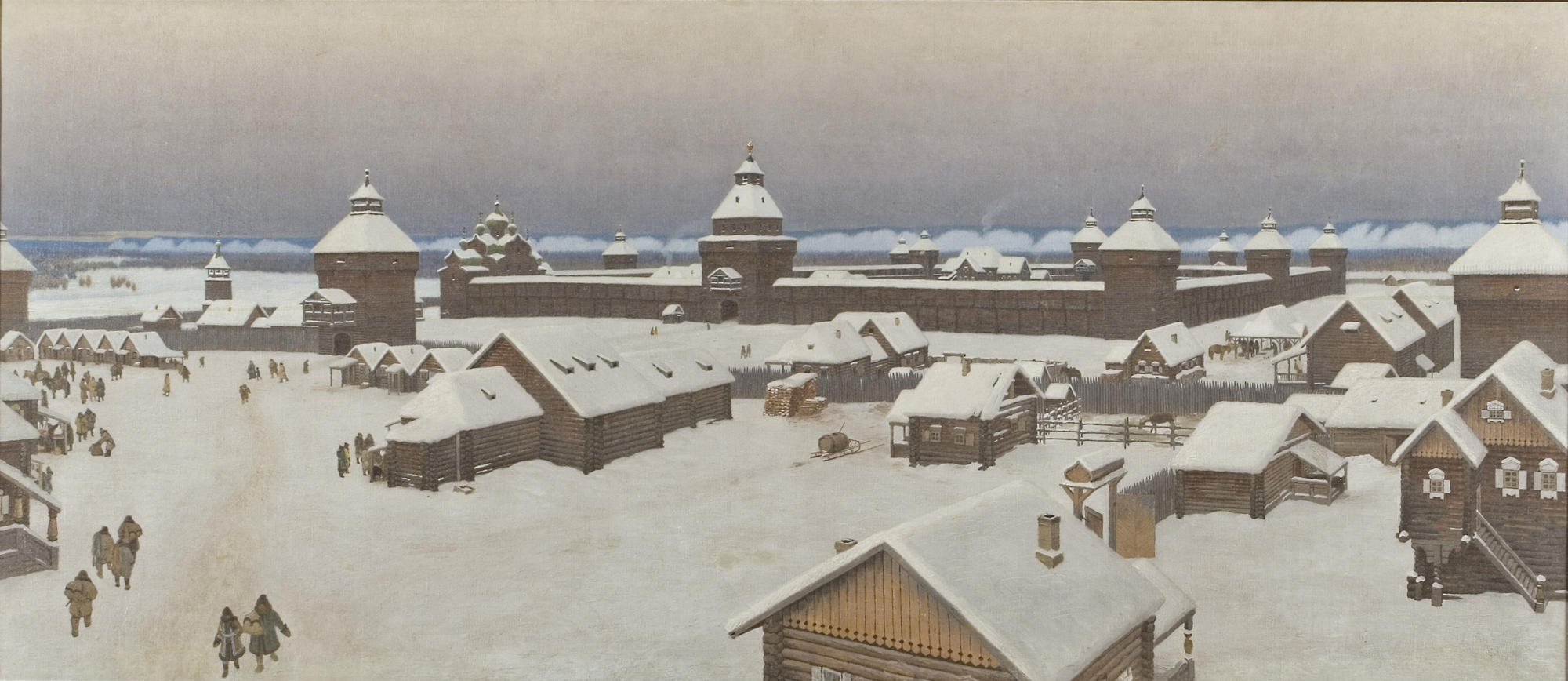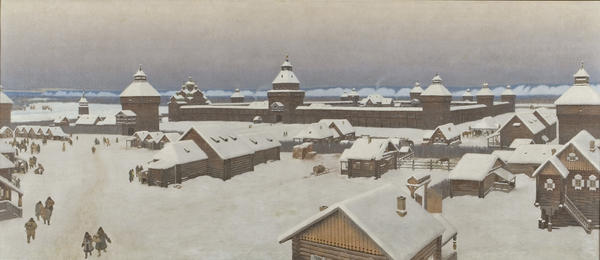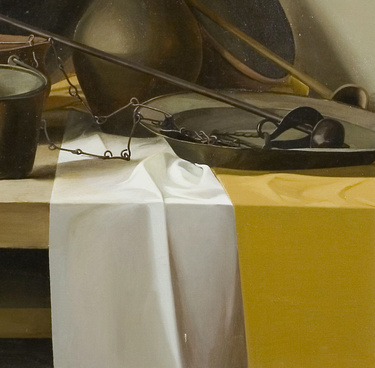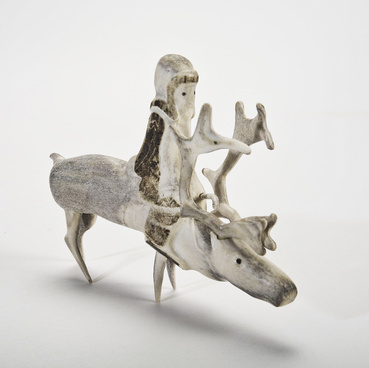Ivan Popov painted the landscape 'Yakutsk in the late 17th Century' in 1928. The artist had a Russian name, but he was born and raised in Yakutia, in the village of Ytyk-Kyol, Tattinsky district (ulus). His father, Vasily Popov, was an Orthodox priest.
Ivan Popov embarked on the career of an artist rather late. At first he wanted to follow his father’s footsteps and in 1891 he entered the Yakutsk Theological Seminary. But he never finished his studies as he was expelled for sketching caricatures of the seminary officials. When he was thirty, Popov went to St. Petersburg to study painting professionally under Alexander Makovsky, a Russian realist painter and a professor at the Academy of Arts.
At the same time, Popov took serious interest in Yakut ethnography. When he returned to Yakutsk, he began to work closely with St. Petersburg museums. He collected valuable artefacts and gathered ethnographic information about the Sakha Republic for them. He expressed his interest in ethnography through painting and created a series of works that offer insight in the history of the territory through its architecture.
The winter landscape 'Yakutsk in the late 17th Century' is his most famous work in the series. Popov depicted the central part of the Yakut ostrog (a Russian term for a small fort) in the 1680-1690s, several years after its foundation. In the foreground, there are snow-covered roofs; in the far left, the viewer can see a crowded market with stalls; closer to the river, there is the Trinity Cathedral, the first church that held a liturgy in the Yakut language.
Popov creates an atmosphere of life in the panoramic view of the fort by focusing on minute details: the viewer can see the grounds of a well-off owner, a wooden house with carved shutters and a high porch, and a marketplace. It is even possible to distinguish the ethnic identity and social status of the people on the left side of the picture.
Popov depicted the fort during evening twilight. He used mainly monochrome greyish tones and a special technique to avoid strong contrasts between light and dark: he applied colours in a thin layer with a soft brush so that the strokes would merge into uniform colour spots.
'Yakutsk in the late 17th Century' is considered to be the artist’s signature painting, while Popov himself is credited as a pioneer of visual art in the Sakha Republic. ‘He was an artist; one can even say he was the first ray of light in the 'dark kingdom' of the Yakut reality of that time, ' wrote Dmitry Sivtsev, a Yakut playwright.



